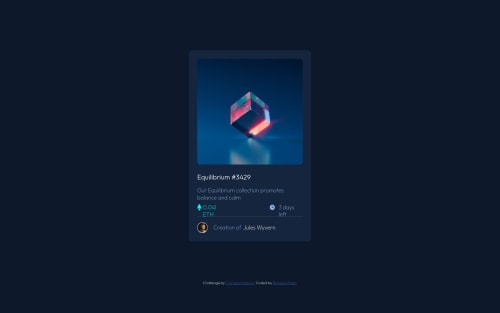Submitted almost 3 years agoA solution to the NFT preview card component challenge
NFT Preview card using HTML,CSS Grid & Flex
@Peteboss

Solution retrospective
Unfortunately, I couldn't get the hover, active, and focus properties right and hence, ignored it. I'd appreciate if someone can link a tutorial on how to effectively add hover, active, and focus states to an image tag.
Code
Loading...
Please log in to post a comment
Log in with GitHubCommunity feedback
No feedback yet. Be the first to give feedback on Peter's solution.
Join our Discord community
Join thousands of Frontend Mentor community members taking the challenges, sharing resources, helping each other, and chatting about all things front-end!
Join our Discord